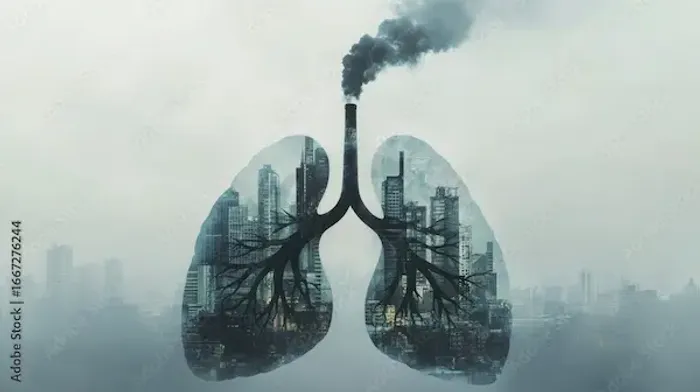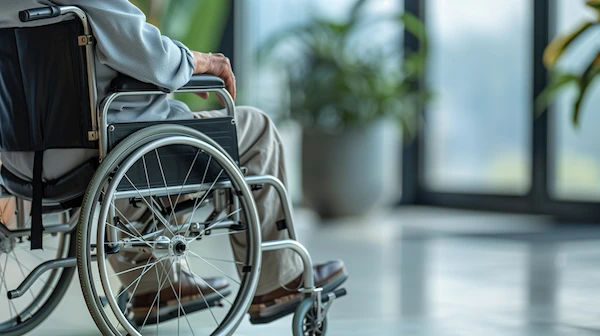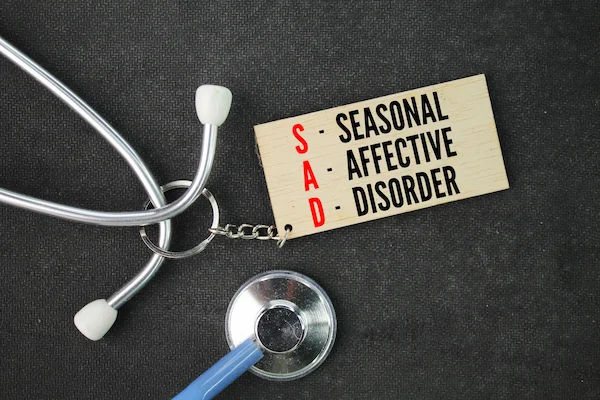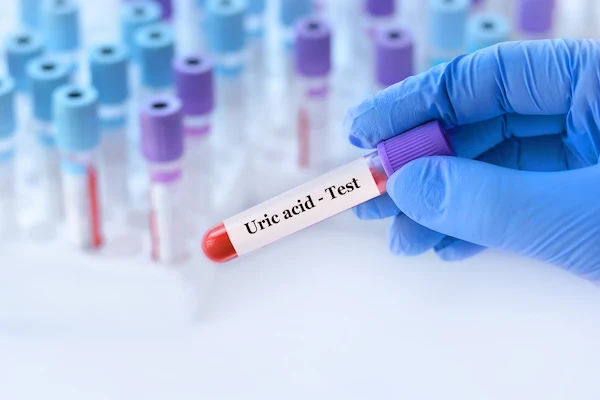Guide to Effects Of Air Pollution On Lungs
Discover how air pollution affects your lungs, its health risks, symptoms to watch for, and preventive steps to protect your respiratory health.

Written by Dr. Dhankecha Mayank Dineshbhai
Reviewed by Dr. Rohinipriyanka Pondugula MBBS
Last updated on 9th Oct, 2025

Introduction
Every breath we take is essential for life, but in today's world, each inhalation can also carry an invisible cocktail of harmful substances. The effects of air pollution on lungs are a growing global health concern, linked to millions of premature deaths each year. Whether you live in a densely populated city or a quieter suburb, understanding this threat is the first step toward protecting your respiratory health. This guide will take you on a journey deep into your respiratory system, explaining exactly how common pollutants breach your body's defenses, the specific diseases they can cause, and, most importantly, what you can do to safeguard your lungs. We'll move beyond the headlines to provide a clear, science-backed look at the real-world impact of polluted air on your well-being.
What's Actually in the Air We Breathe?
Before we can understand the damage, we need to know the culprits. Air pollution isn't a single substance but a complex mixture of particles and gases. The most harmful components for our lungs are broadly categorised into particulate matter and gaseous pollutants.
Particulate Matter (PM): The Tiny Invaders
Think of Particulate Matter (PM) as tiny solid or liquid droplets suspended in the air. They are categorised by size, which determines how deep they can travel into your lungs.
- PM10: Particles with a diameter of 10 micrometres or less. These can irritate the eyes, nose, and throat but are often filtered out higher in the respiratory tract.
- PM2.5: These are fine particles 2.5 micrometres or smaller, about 30 times smaller than the width of a human hair. This is the most dangerous fraction. Their minute size allows them to bypass the body's natural defenses and travel deep into the alveoli, the tiny air sacs where oxygen exchange happens. PM2.5 is primarily produced by vehicle exhaust, power plant emissions, and industrial processes. The impact of PM2.5 on respiratory health is severe because these particles can carry toxic chemicals directly into your bloodstream.
Gaseous Pollutants: The Invisible Irritants
These gases cause harm by reacting with the delicate lining of your airways.
- Nitrogen Dioxide (NO2): A reddish-brown gas mainly from vehicle emissions and fossil fuel combustion. It's a powerful
irritant that can inflame the lining of the lungs and reduce immunity to respiratory infections like bronchitis. - Ozone (O3): While protective in the upper atmosphere, at ground level it's a harmful pollutant created by chemical
reactions between oxides of nitrogen and volatile organic compounds in sunlight. Ozone is a primary component of
smog and can cause a sunburn-like effect on lung tissue, leading to shortness of breath and chest pain.
The Journey of a Pollutant Into Your Lungs
Your respiratory system is equipped with an impressive defense mechanism, but it can be overwhelmed by chronic or high-level exposure.
How Your Lungs Normally Defend Themselves
Your body has a multi-layered defense system:
1. Nose Hairs & Mucus: Your nose filters out larger particles. The airways are lined with mucus that traps smaller particles and germs.
2. Cilia: Microscopic, hair-like structures line your windpipe and bronchi. They beat in a wave-like motion to sweep the mucus-trapped particles upward to your throat, where they are swallowed or coughed out. This is often called the "mucociliary escalator."
When Defenses Are Overwhelmed: The Damage Begins
When you are exposed to high levels of pollution over time, these defenses break down. Chronic inflammation from air pollution is the root cause of most damage. Pollutants like PM2.5 and ozone irritate the lung tissue, triggering an immune response. This leads to swelling and an influx of immune cells, which release chemicals to fight the invaders. However, when this inflammation becomes constant, it starts to damage healthy lung tissue itself, scarring the airways and air sacs and reducing lung function permanently.
Consult a Pulmonologist for the best advice
Specific Respiratory Diseases Linked to Air Pollution
The constant assault of pollutants is directly linked to the development and worsening of several major respiratory conditions.
Asthma Exacerbation and Development
For the over 300 million asthma sufferers worldwide, air pollution is a major trigger. Pollutants irritate the hypersensitive airways of asthmatics, causing them to constrict and leading to wheezing, coughing, and asthma attacks. More alarmingly, studies now show that long-term exposure, especially in children, can actually increase the risk of developing asthma.
Chronic Obstructive Pulmonary Disease (COPD)
COPD and air pollution are strongly connected. COPD is an umbrella term for progressive diseases like emphysema and chronic bronchitis that cause obstructed airflow from the lungs. While smoking is the primary cause, long-term exposure to air pollution (especially PM2.5 and NO2) is a significant risk factor. The pollution accelerates the decline in lung function, leading to more frequent flare-ups (exacerbations), hospitalisations, and increased mortality. If you experience a persistent cough with mucus or worsening shortness of breath, it's crucial to consult a doctor.
Lung Cancer and Pollution's Carcinogenic Effects
The World Health Organisation has classified outdoor air pollution as a Group 1 carcinogen, meaning it is known to cause cancer in humans. Fine particles can carry carcinogenic compounds like polycyclic aromatic hydrocarbons (PAHs) deep into the lungs. These substances can cause DNA mutations in lung cells, leading to uncontrolled growth and cancer. It's estimated that air pollution contributes to a significant percentage of lung cancer cases from environmental factors.
Who is Most at Risk from Poor Air Quality?
While air pollution affects everyone, some groups are more vulnerable:
- Children: Their lungs are still developing, they breathe faster, and they spend more time outdoors.
- The Elderly: Often have pre-existing heart or lung conditions and reduced lung capacity.
- People with Pre-existing Respiratory or Cardiovascular Diseases: Their systems are already compromised.
- Outdoor Workers: Have higher exposure levels over long periods.
- Pregnant Women: Exposure can affect fetal lung development.
Protecting Your Lungs: Practical Steps for Daily Life
You can't control the outdoor air completely, but you can take proactive steps to minimise your risk.
Monitoring Air Quality: Your Daily Defense
Check your local Air Quality Index (AQI) daily using weather apps or government websites. On days when the AQI is high (Code Orange or higher):
- Limit prolonged outdoor exertion.
- Plan outdoor activities for the morning when ozone levels are often lower.
- Wear a well-fitted N95 or KN95 mask if you must be outside for extended periods.
Creating a Safe Haven: Improving Indoor Air Quality
Since we spend about 90% of our time indoors, this is critical.
- Use Air Purifiers: Invest in a HEPA air purifier, which can effectively remove particulate matter from your home
environment. - Ventilate Wisely: Open windows when outdoor air quality is good to air out indoor pollutants. Avoid doing so during
high-pollution hours. - Avoid Indoor Pollutants: Don't smoke indoors, and be mindful of volatile organic compounds from cleaning products, air fresheners, and paints.
Conclusion
The evidence is clear and compelling: the effects of air pollution on lungs represent a silent public health crisis. From triggering everyday discomfort to driving the progression of life-altering diseases like COPD and cancer, the quality of the air we breathe is inextricably linked to our long-term health. While the problem is global and requires systemic solutions, individual empowerment is equally important. By understanding the risks, monitoring your environment, and taking simple, proactive steps to reduce your exposure both outdoors and indoors, you can significantly safeguard your respiratory health. Remember, your lungs are designed to last a lifetime; protecting them from preventable damage is one of the most impactful investments you can make in your future well-being. Start today by checking your local air quality and considering one change, like improving ventilation at home, to breathe easier.
Consult a Pulmonologist for the best advice
Consult a Pulmonologist for the best advice

Dr. P Sravani
Pulmonology Respiratory Medicine Specialist
3 Years • MBBS, MD
Visakhapatnam
Apollo Clinic Vizag, Visakhapatnam

Dr Vishwa Vijeth K.
Pulmonology Respiratory Medicine Specialist
8 Years • MBBS, MD ( Respiratory Medicine)
Bangalore
Apollo Clinic Bellandur, Bangalore
Dr Arjunsa Satpute
Pulmonology Respiratory Medicine Specialist
14 Years • MBBS, MD Pulmomary Medicine , FCCP (USA)
Bangalore
Apollo Clinic Bellandur, Bangalore

Dr. Chaithanya R
Internal Medicine Specialist Diabetologist
16 Years • MBBS, MD Internal Medicine, Fellowship in Diabetes(UK), CCEBDM(PHFI)
Bangalore
Apollo Clinic Bellandur, Bangalore
(75+ Patients)

Dr. Ashish Kumar
Pulmonology Respiratory Medicine Specialist
14 Years • Doctor of Medicine, D.T.C.D
Noida
Noida Asthma and chest clinic, Noida
Consult a Pulmonologist for the best advice

Dr. P Sravani
Pulmonology Respiratory Medicine Specialist
3 Years • MBBS, MD
Visakhapatnam
Apollo Clinic Vizag, Visakhapatnam

Dr Vishwa Vijeth K.
Pulmonology Respiratory Medicine Specialist
8 Years • MBBS, MD ( Respiratory Medicine)
Bangalore
Apollo Clinic Bellandur, Bangalore
Dr Arjunsa Satpute
Pulmonology Respiratory Medicine Specialist
14 Years • MBBS, MD Pulmomary Medicine , FCCP (USA)
Bangalore
Apollo Clinic Bellandur, Bangalore

Dr. Chaithanya R
Internal Medicine Specialist Diabetologist
16 Years • MBBS, MD Internal Medicine, Fellowship in Diabetes(UK), CCEBDM(PHFI)
Bangalore
Apollo Clinic Bellandur, Bangalore
(75+ Patients)

Dr. Ashish Kumar
Pulmonology Respiratory Medicine Specialist
14 Years • Doctor of Medicine, D.T.C.D
Noida
Noida Asthma and chest clinic, Noida
More articles from General Medical Consultation
Frequently Asked Questions
1. Can your lungs recover from air pollution damage?
Yes, to an extent. The lungs have a remarkable ability to repair themselves. Short-term exposure effects, like irritation, are often reversible. However, long-term damage, such as scarring (fibrosis) or emphysema, is usually permanent. The best strategy is to prevent further damage by reducing exposure.
2. What are the early warning signs of pollution-related lung damage?
Early signs can be subtle and include a persistent cough (especially in the morning), increased mucus production, wheezing, shortness of breath during light physical activity, and frequent respiratory infections. If you notice these symptoms, it's important to pay attention.
3. Are air purifiers really effective against pollution?
Yes, high-efficiency particulate air (HEPA) purifiers are very effective at removing particulate matter (PM2.5) from indoor air. They are particularly beneficial for vulnerable individuals and in areas with high outdoor pollution. Look for models that are appropriately sized for the room.
4. How does indoor air quality compare to outdoor?
Indoor air can be 2 to 5 times more polluted than outdoor air due to factors like dust, pet dander, mold, cleaning chemicals, and smoke. Therefore, managing indoor air quality is a critical part of protecting your lungs, especially since we spend most of our time inside.
5. What is the best mask to wear for air pollution?
Standard cloth or surgical masks offer little protection against small pollutants. For effective protection, use a respirator mask rated N95, KN95, or FFP2. These masks are designed to form a seal on your face and filter out at least 95% of fine particles.




.webp)